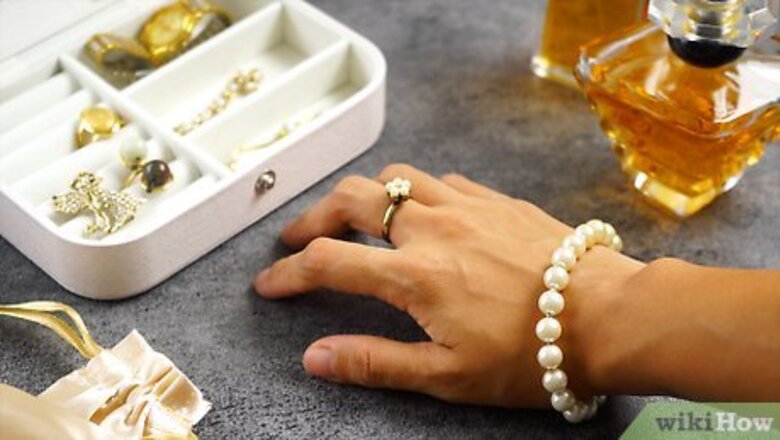
views
Daily Care
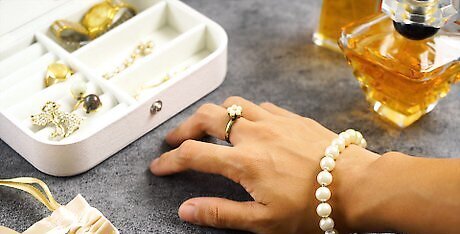
When you put them on, wear them after you're done with everything. When you're taking everything off, take them off first. As an organic gem composed of calcium carbonate, pearls are more vulnerable to the chemicals found in cosmetics, hair spray, and perfume. Dress, style your hair, apply your make-up, and spray on your perfume before you put on any pearl jewelry.
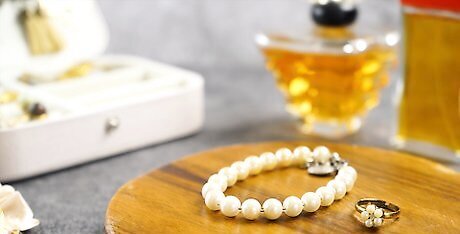
Limit your use of pearl rings and bracelets. These pieces are more subject to scratching since they sit on your hands. Never wear these pieces when you anticipate working with your hands, and limit them to special occasions. Especially if you know you are going to do a rough job like playing sports, bathing or grooming your pet, take them off immediately.
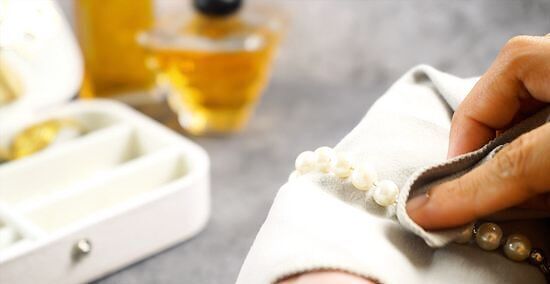
Gently wipe your pearls with a soft cloth after you remove them for the day. A pearl's luster can be damaged by even the smallest amount of perspiration. Removing your sweat from the pearls after each use helps preserve their luster. You can also dab a drop of water on them and clean them off. Don't scrub too hard, even though it is soft cloth!
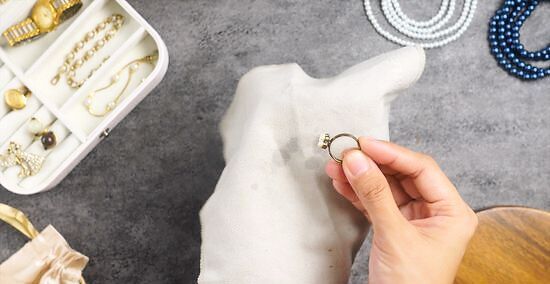
Immediately wipe your pearls clean with a soft cloth if they get exposed to acid. Acid can come in the form of sweat, perfume, fruit juice, vinegar, or a number of other substances. The acid will break down the crystallized calcium of the pearl, ruining its luster and causing a very long-term damage.
Cleaning
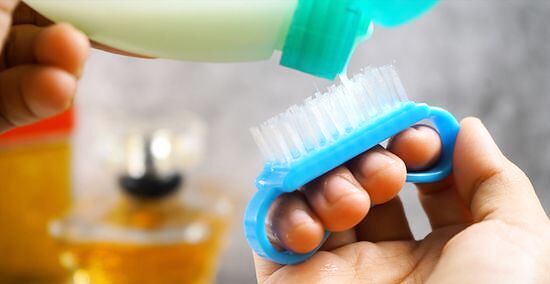
Gently apply a baby shampoo or another mild soap using a soft manicure brush. Harsh cleaners can destroy the pearl, and a harder brush can also cause scratches. Soft-bristled toothbrushes work well as they can poke into thin crevices as well. Some good brands are Walgreens Fresh Smile, Smile and Save, and Oral-B Cross Action.
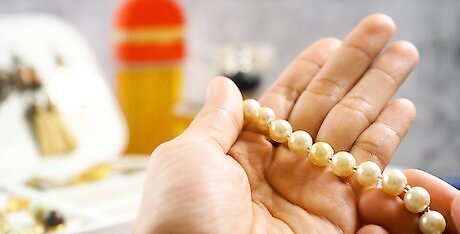
Support the strand if the pearls are on a necklace or bracelet. Do not stretch the thread as you clean. The pearls may get loose and drop out.
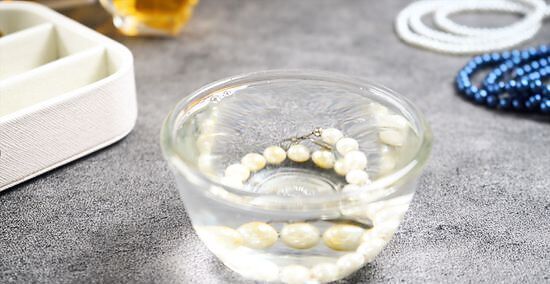
Only use mineral water or distilled water to rinse your pearls. Standard tap water contains chlorine and other chemicals that can damage the surface of your pearls.

Gently dab the water and soap of your pearls with a dry, soft cloth. Do not let chemicals or water sit on your pearls too long.
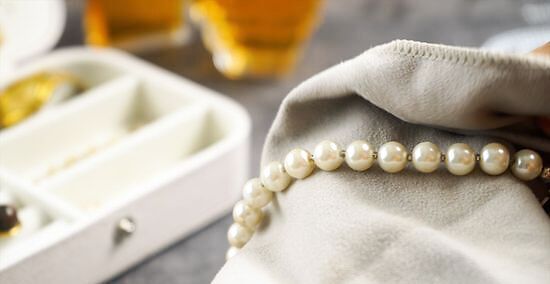
Polish your pearls with a dry, soft cloth to maintain their luster.

Avoid jewelry cleaners or ultrasonic cleaners. These are too rough and will damage your pearls.
Storage
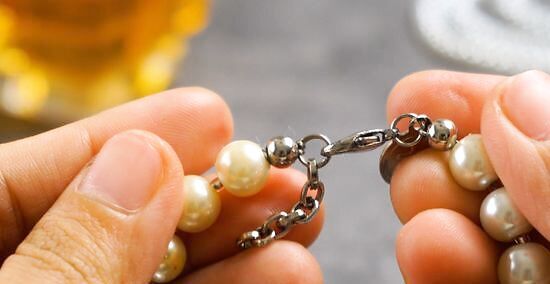
Fasten any clasps or pins before storing your pearls. These sharp metal objects could rub up against the pearl and cause scratches. Unclasped strands may also become tangled and cause your pearls getting horribly scratched.
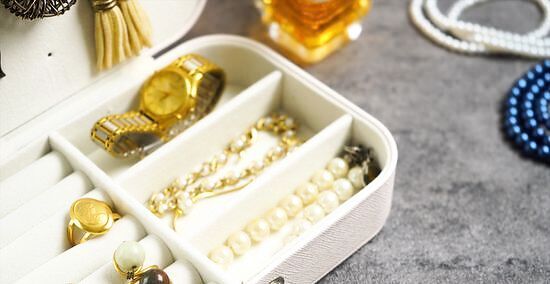
Keep your pearls in a separate compartment, away from other jewelry. Other gems may scratch the surface of the pearls if they come into contact with them. Even other pearl pieces may have metal elements that could scratch the pearls on a separate piece, so store each pearl piece in its own compartment. If possible, use a small velvet drawstring bag and insert the pearl in there.
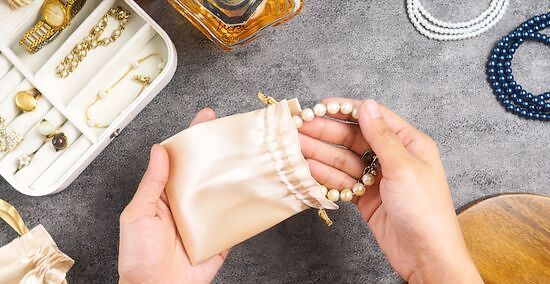
Consider storing your pearls in a silk bag, velvet-lined box, or satin-lined pearl folder. Taking this extra precaution will ensure that nothing else scratches your pearls.
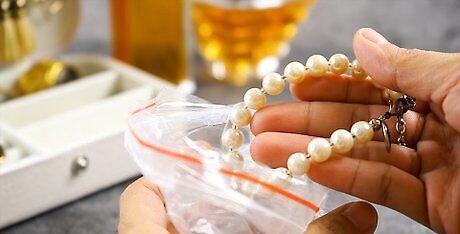
Never store pearls in a plastic bag. Some plastics can emit a chemical that, over time, will cause your pearls to deteriorate. Airtight plastic bags can also cause vapor or sweat inside.
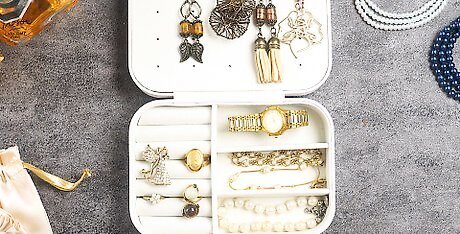
Store pearl strands flat to avoid stretching out the string. Avoid hanging them high or hanging them at all.
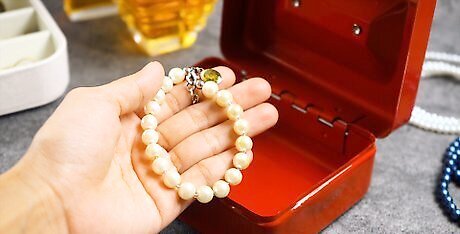
Do not keep pearl stored in a safe or safety deposit box for an extended period of time. These dry conditions will dehydrate you pearls, causing them to develop small surface fractures. Air them at least every week or a month.
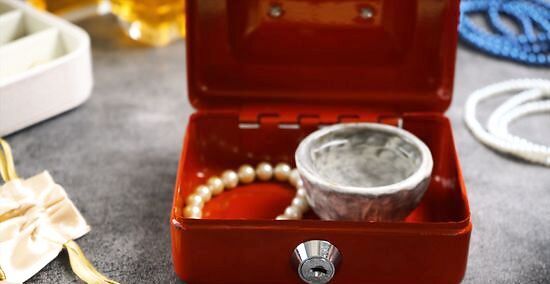
Keep a glass of water inside a vault or safe if you must store your pearls there. This will help humidify the air, slowing down the dehydration process.
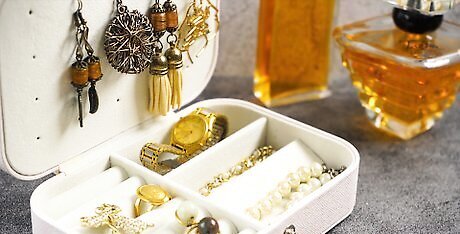
Keep your pearls stored in a jewelry box or other case. Avoid jewelry boxes with windows that expose your jewelry to light. Long-term exposure to sunlight can cause your pearls to turn yellow.
Long-Term Care
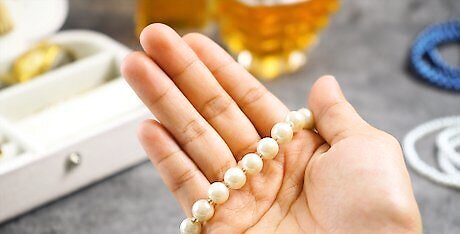
Avoid long-term exposure to strong light or heat above 140°F (60°C). These elements can dry out your pearls, causing them to crack.
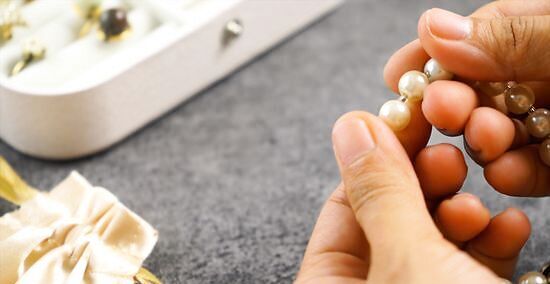
Examine strands of pearls for loosening strings. If the threads begin to fray, you should have your pearls restrung.
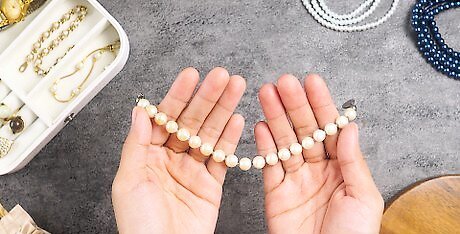
Have your pearls restrung every one or two years, especially if you wear them consistently. Even if you do not notice visible signs of wear on the strand, the string will likely start to fray by then.
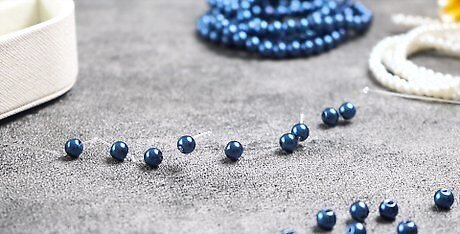
Ask your jeweler to knot the strand in between beads to provide the strand with added protection. This way, if a string breaks, you only lose a single pearl. Moreover, a knotted string keeps your pearls from rubbing against one another, which helps reduce surface scratching.




















Comments
0 comment